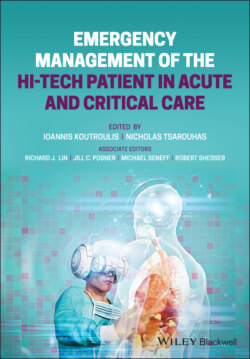Читать книгу Emergency Management of the Hi-Tech Patient in Acute and Critical Care - Группа авторов - Страница 36
Peritonitis
ОглавлениеPeritonitis in a patient with an enteric feeding device is caused by an improperly placed tube, until proven otherwise. In the case of NG tube placement, the tube perforates the bowel wall; and in the case of G‐tube placement, the tube can be improperly placed in the peritoneum. Patients may initially be asymptomatic but will progress to diffuse abdominal tenderness, rebound, and sepsis. All NG tubes should have radiographic confirmation of their placement. For G‐tubes, patients with immature tracts, trauma to the tract, or any difficulty placing the G‐tube should have a contrast‐enhanced radiograph to confirm tube placement. Some argue that if a patient is observed receiving a feeding without difficulty, the tube is likely properly positioned. However, patients with multiple comorbidities may not be able to show discomfort. One must have a heightened level of suspicion and err on the side of caution when confirming NG and G‐tube replacements because while complications are rare, they can be life‐threatening.
